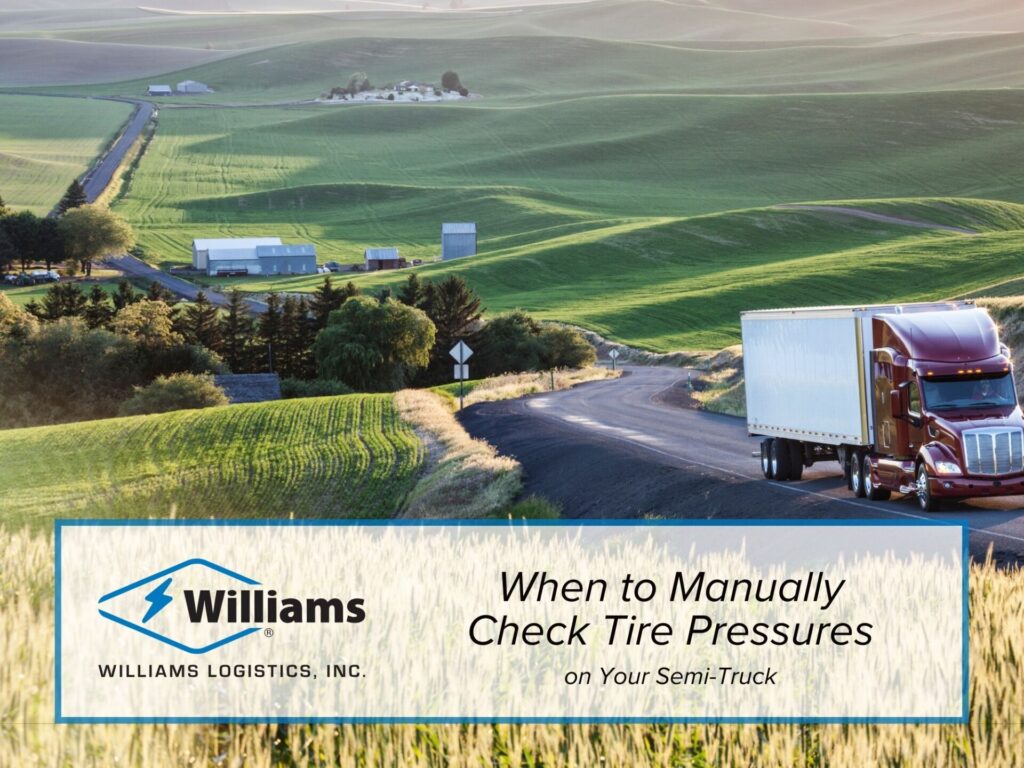As a professional truck driver, your vehicle's tires are one of the most critical components that need constant monitoring and maintenance. Maintaining proper tire pressure is not only essential for safe driving but also for fuel efficiency and overall vehicle performance. While many modern trucks are equipped with tire pressure monitoring systems, it's still crucial for drivers to manually check tire pressures at various times to ensure everything is in good working order. Here are the five best times to manually check tire pressures on your semi-truck and trailers:
1. Start of your shift before heading out
One of the best times to manually check tire pressures on your semi truck and trailer is at the start of your shift before heading out on the road. This is a crucial time to ensure that all tires are properly inflated and in good condition before embarking on your journey. By manually checking the tire pressures, you can identify any potential issues such as under-inflation or over-inflation, which can lead to uneven tire wear, reduced fuel efficiency, and even blowouts on the road. This is also a good time to visually inspect your tires for any signs of damage or wear that may need attention.
2. When hooking up to a trailer
When hooking up to a trailer, it's crucial to check the tire pressures on both your truck and the trailer. Different trailers may have different tire pressures, so it's important to ensure that all tires are inflated to the proper levels. Inflating tires to the correct pressure can help prevent uneven wear and improve fuel efficiency. Additionally, manually checking tire pressures before hitting the road with a trailer can help prevent blowouts and other tire-related issues while traveling. A simple visual inspection may not always be enough to identify tire issues, so manually checking the tire pressures will give you peace of mind knowing that everything is in proper working order before hitting the road.
3. At regular intervals during long trips
During long hauls, take the time to check tire pressures at regular intervals to ensure they remain at the recommended levels. Long hours on the road, changing road conditions, and varying weather can all affect tire pressures. Regularly checking tire pressures during long trips can help you detect any potential issues early on and prevent costly breakdowns or accidents.
4. Before entering challenging terrain
If you're about to enter challenging terrain such as mountainous regions, construction zones, or rough roads, go ahead and manually check your tire pressures. Different terrains can put added strain on your tires and affect tire pressures. By checking tire pressures before entering challenging terrain, you can ensure your tires are properly inflated to handle the conditions and reduce the risk of tire-related issues.
5. After hitting a pothole or curb
If you hit a pothole, curb, or any other obstacle while on the road, stop and check your tire pressures. Impact from hitting obstacles can cause damage to your tires and affect tire pressures. While some potholes and other obstacles won’t have much effect on your tires depending on their size, it’s recommended to take a moment to check. By inspecting your tire pressures after hitting an obstacle, you can catch any issues early on and prevent further, unexpected damages.
Relying on Sensors and Monitors
While it may be tempting to rely solely on computer sensors and monitors to alert you of any tire issues, it is important to remember that these systems are not foolproof and can sometimes fail to detect issues. By taking the time to manually check tire pressures at specific times, you can catch any potential problems before they escalate into more significant issues on the road.
Overall, the best times to manually check tire pressures on your semi truck and trailer are during these five times. While computer sensors and monitors can be helpful tools, they should not be relied on exclusively to detect tire issues. Taking the time to perform these checks can help prevent breakdowns, accidents, and costly repairs, making it a worthwhile investment in vehicle safety.
